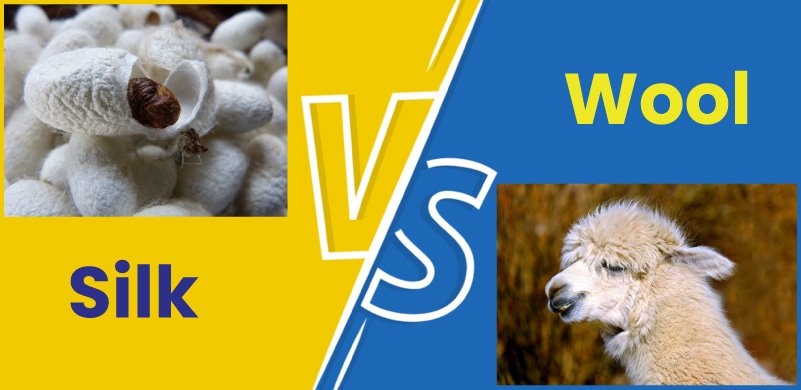Difference Between Silk and Wool
Last updated on August 11th, 2023 at 10:36 pm
Definition of Silk
Silk is called the queen of fibres. It is a natural fibre (Protein) obtained from the cocoons of the silk silkworm. It is a continuous natural filament fibre.
Definition Of Wool
Wool is also a natural fibre obtained from sheep and other animals like goats, rabbits, camels, etc. It is 100% natural, biodegradable and renewable natural fibre. It is also Wrinkle resistant, Naturally breathable, Naturally elastic, Easy to care for, and Stain resistant.

The Basic Difference Between Silk and Wool
| Subject | Silk | Wool |
| Composition | It has carbon, hydrogen, oxygen, and nitrogen. It is attacked by carpet beetles. | It has hydrogen, carbon, sulfur, and nitrogen. It is harmed by moths and beetles. |
| Elasticity | It has extended polypeptide chains and is less elastic and resilient. | It has folded polypeptide chains and is more elastic and resilient. |
| Strength | It is very crystalline and is less absorbent. | It has more amorphous areas and more absorbent. |
| Dimensional Stability | It is a solid fibre. | It has four parts in its fibre structure and therefore shrinks and felts. |
| Texture | It is smooth. White silk is smoother and more lustrous. | White wool fibre has crimp which is molecular. Therefore wool is warmer and more resilient. |
| Length | It is usually a filament and is smooth. | It is a staple fibre and is fuzzy. |
| Hygroscopic Nature | Since it has a very crystalline polymer system, it is less absorbent than wool. | It is more absorbent. |
| Thermal Properties | It is more sensitive to heat. | It is less sensitive to heat. |
| Effect of Acids | It is degraded more than wool because of the absence of disulfide bonds, perspiration which is acidic will cause the breakdown of silk polymer. | It is degraded less than silk. |




Good work
Thank you for writing this post. I like the subject too.